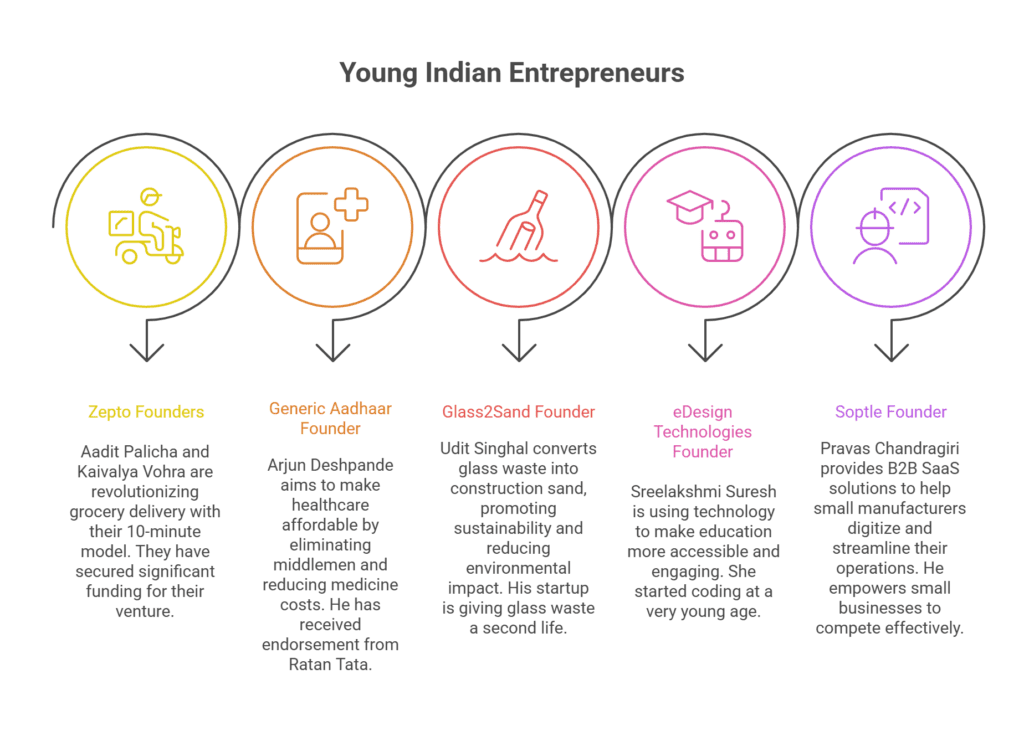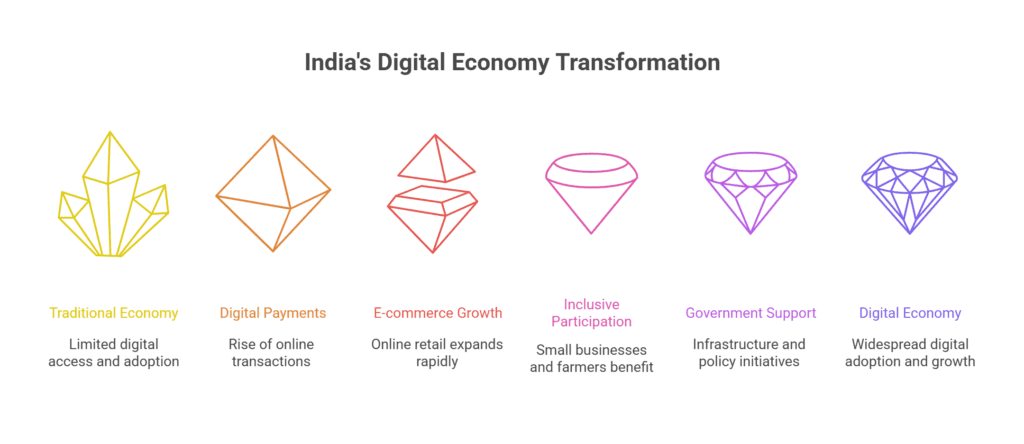Picture this: It’s 2026. The air in Mumbai is thick with the scent of ambition (and, okay, a little monsoon humidity). Bengaluru’s traffic is still a beast, but the conversations in those cabs? Electric. Everyone’s talking about the next big thing: startups, unicorns, green tech, digital payments, and, believe it or not, sand made from recycled glass bottles. Wild, right?
But let’s not get ahead of ourselves. India’s business future isn’t just a story of numbers and projections (though, trust me, there are plenty of those). It’s a living, breathing saga, full of hustle, hope, and a few curveballs. So, if you’re curious about how new-age entrepreneurs are shaping India’s business landscape in 2026, or you just want to know what’s next for the world’s most dynamic economy, you’re in the right place.
The Big Picture: India’s Business Landscape in 2026
First things first: the numbers. They’re kind of jaw-dropping. India’s GDP? Shooting for $6 trillion by 2030, with the IMF pegging growth at a cool 6.3% for 2026. That’s not just fast; it’s “blink and you’ll miss it” fast. And the drivers? Domestic consumption (think: 70% of GDP), a swelling middle class, and a government that’s finally figured out that startups aren’t just a Silicon Valley thing.
But here’s the kicker: It’s not just about growth for growth’s sake. The real story is in the how. India’s new-age entrepreneurs aren’t just building businesses; they’re rewriting the playbook. They’re betting big on digital, going all-in on sustainability, and, honestly, making the old guard look a little, well, old.
Meet the Mavericks: New-Age Entrepreneurs Who Refuse to Play Small

Let’s spill the beans on a few names you’ll want to remember. These aren’t your run-of-the-mill founders. They’re the ones who see a broken system and think, “Yeah, I can fix that.” Or at least, “I can make it better (and maybe have some fun along the way).”
- Aadit Palicha & Kaivalya Vohra (Zepto): Two guys, barely out of their teens, who looked at India’s grocery delivery scene and thought, “Ten minutes or bust.” Zepto’s 10-minute delivery model? It’s not just fast; it’s a shot of adrenaline for urban India. And with nearly $2 billion in funding, they’re not exactly flying under the radar.
- Arjun Deshpande (Generic Aadhaar): The so-called “Robinhood of Indian Pharma.” His idea? Cut out the middlemen, slash medicine prices, and make healthcare affordable for everyone. (Ratan Tata himself gave this one a thumbs-up. No big deal.)
- Udit Singhal (Glass2Sand): Ever heard of turning empty bottles into construction sand? Udit did. And now, thanks to his startup, India’s glass waste is getting a second life, and the planet’s breathing a little easier.
- Sreelakshmi Suresh (eDesign Technologies): She started coding before most of us could spell “HTML.” Now, she’s using tech to make education more accessible, more fun, and, honestly, a lot less boring.
- Pravas Chandragiri (Soptle): B2B SaaS for the little guys. He’s helping small manufacturers digitize, streamline, and punch way above their weight.
What do they all have in common? Grit. Tech chops. And a knack for seeing opportunity where others see chaos. (Also, a healthy disregard for the phrase “That’s impossible.”)
Startup Trends: What’s Hot, What’s Next, and What’s Just Getting Started
Okay, so what’s actually happening on the ground? Here’s the lowdown.
Fintech: The Money Moves Faster Than You Can Blink
UPI. BNPL. Neobanks. If you’re not already using at least one of these, you’re probably living under a rock (or, you know, just using cash). India’s fintech scene is exploding to $95 billion by 2030, if the experts are right. And it’s not just about payments. It’s about access. Microloans for the chaiwala. Digital wallets for your grandma. Financial inclusion, but make it cool.
Edtech: Learning Gets a Makeover
Remember when online classes were just a pandemic thing? Not anymore. Edtech is here to stay, and it’s getting smarter, literally. AI-driven platforms, personalized learning, and upskilling for everyone from schoolkids to mid-career pros. The best part? It’s not just for the metros. Tier II and III cities are getting in on the action, too.
Green Tech: Saving the Planet (and Making a Buck While You’re at It)
Here’s where things get really interesting. Startups like Ather Energy and BluSmart are making electric vehicles mainstream. Phool.co is turning temple flowers into incense (talk about a sweet-smelling solution). And the circular economy? It’s not just a buzzword. It’s real, it’s growing, and it’s changing how we think about waste.
Digital Public Infrastructure: The Secret Sauce
Funny thing is, a lot of this innovation wouldn’t be possible without India’s digital backbone. UPI, Aadhaar, and ONDC these aren’t just acronyms. They’re the pipes and wires making everything else possible. Want to launch a fintech app? UPI’s got your back. Need to verify a customer in seconds? Aadhaar to the rescue. Trying to sell your homemade pickles online? ONDC is opening doors for small businesses everywhere.
AI, Blockchain, IoT: The Usual Suspects (But Smarter)
AI is everywhere, predicting what you’ll buy, helping doctors diagnose faster, and even making your online classes less boring. Blockchain? It’s not just for crypto bros. Think smart contracts, supply chain transparency, and, yes, a little DeFi action. IoT? From smart farms to smart homes, it’s making life easier, one sensor at a time.
Digital Economy: The Great Leveler

Let’s pause for a second. Because this is big. India’s digital economy isn’t just growing; it’s transforming everything. Digital payments are set to hit $10 trillion by 2026. E-commerce? $325 billion by 2030. And it’s not just the big guys cashing in. Small kirana stores, farmers, teachers, everyone’s getting a piece of the pie.
Take retail. Those tiny shops on the corner? They’re using QR codes and UPI to serve customers who’d rather tap than count change. Farmers are selling crops online, skipping the middlemen. Doctors are doing tele-consults from their living rooms. Even schools are going hybrid, mixing online and offline for the best of both worlds.
And the government? For once, they’re not just watching from the sidelines. Digital India, 5G rollouts, and Startup India are all in, building the infrastructure and cutting the red tape (well, some of it).
Sustainability: Not Just a Buzzword Anymore
Here’s the thing: If you’re not thinking green, you’re already behind. Indian consumers, 63% of them, if you believe the surveys, are willing to pay more for sustainable products. Investors are pouring money into ESG-friendly startups. And the government? They’re dangling carrots (tax breaks, subsidies) and waving sticks (stricter regulations) to get companies on board.
Ather Energy is making EVs cool. BluSmart is cleaning up ride-sharing. Phool.co is turning waste into wonder. And platforms like Relove are making secondhand chic. The circular economy is here, and it’s not going anywhere.
The Hard Stuff: Challenges Nobody Likes to Talk About (But Should)
Let’s not sugarcoat it. Building a business in India isn’t all sunshine and unicorns. Funding? Still tough, especially if you’re not in fintech or e-commerce. Regulations? A maze. Talent? Everyone’s fighting for the same engineers and designers. And don’t even get me started on global uncertainties, trade wars, supply chain hiccups, you name it.
But here’s the silver lining: Every challenge is an opportunity in disguise. Can’t raise VC money? Try crowdfunding or government grants. Struggling with red tape? There are digital tools (and a few good lawyers) for that. Can’t find talent? Build a killer culture, offer remote work, and invest in training.
Opportunities: The Glass Is More Than Half Full
If you’re an entrepreneur (or thinking about becoming one), there’s never been a better time. The consumer market is massive and getting bigger. Digital tools make it easier than ever to launch, scale, and pivot. Government support is real (if you know where to look). And sustainability? It’s not just good for the planet; it’s good for business.
Want to stand out? Focus on customer experience. Build something people actually need. Network like crazy. Stay agile. And, above all, keep learning. The only constant is change, after all.
So, what’s next?
Honestly, who knows? That’s half the fun. But if the past few years are any indication, India’s business future is going to be bold, messy, and wildly exciting. New-age entrepreneurs aren’t just building companies; they’re building a new India. One that’s digital, sustainable, and (if we’re lucky) a little more inclusive.
So, whether you’re a founder, a dreamer, or just someone who loves a good underdog story, keep your eyes on India. The best is yet to come.








